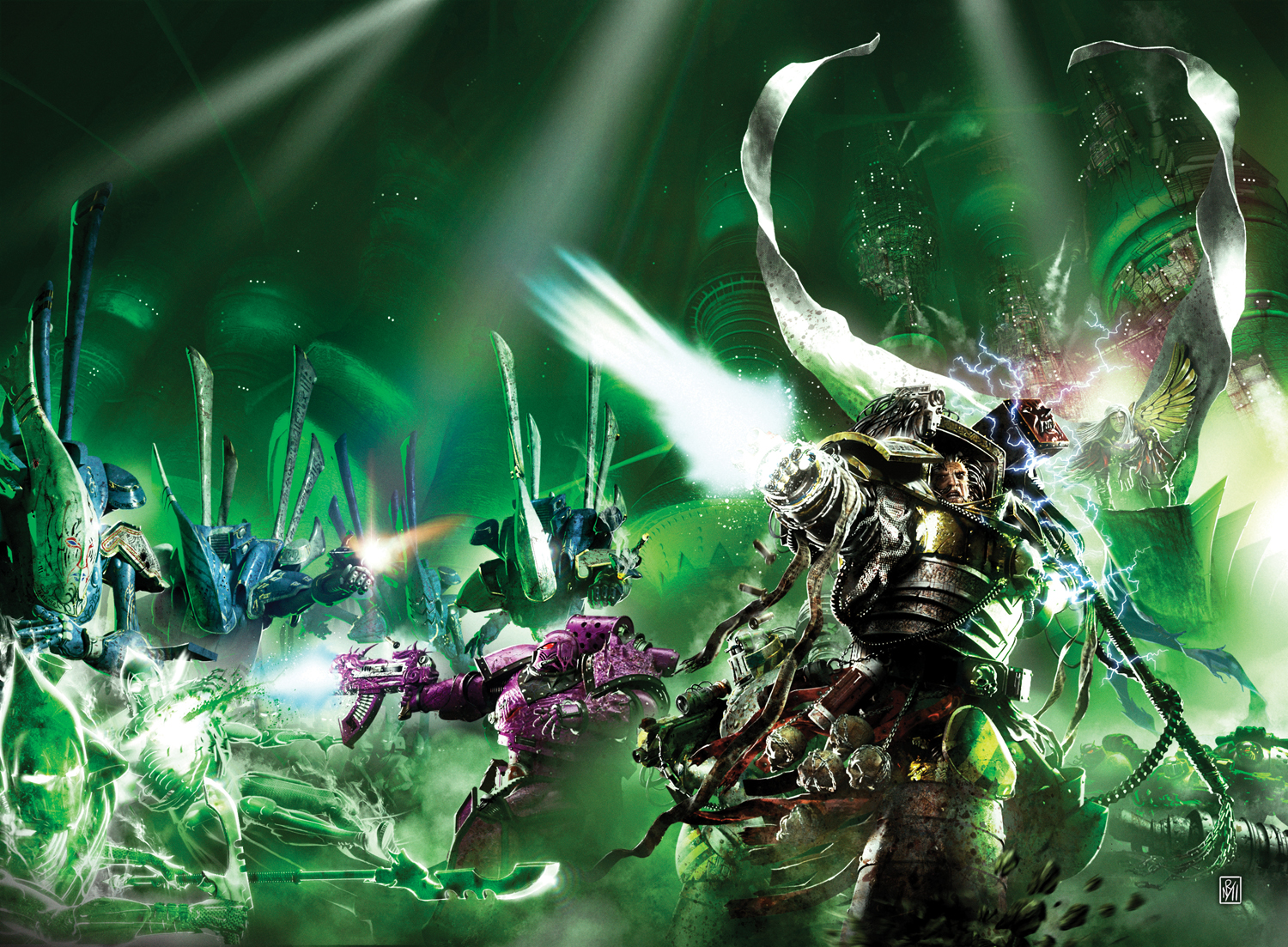
The swarms of Hive Fleet Hydra descend upon the world of Vondrak, and the Knights of Cadmus answer the call to war. Baron Roland of Cadmus seeks to throw off the yoke of Adeptus Mechanicus control, but the lords of the Red Planet do not easily relinquish their vassals, and they will do anything to ensure that Cadmus remains bound to Mars. With the fate of Vondrak at stake and the designs of a feared Martian adept upon them, can the Knights of the Imperium survive long enough to repel the hated xenos?
Writer’s Commentary
This was a project that kind of fell into my lap, and one I had immense fun writing. The Knights have always been a favourite part of the background to me, hence why I used the Knights of Taranis in Mechanicum. The Knights of the Heresy era are a very different beast to those of the current codex (which I was lucky enough to get a hold of when writing this novella – though I wish I’d had a copy of the Knights Companion…).
The tone of this codex was very different to anything I’d read from Games Workshop. It made the Knights and their Households a very different prospect to anything else in 40k. These guys had wives, children and homes they could reasonably expect to see again once the fighting was done. They were ‘ordinary’ men and women who did exceptional things, and right away that made them interesting. And I loved the fact that the female consorts of the Knights were just as important to the House.
I’d been following a lot of internet discussion about women in genre fiction, and this project was a gift when it came to redressing the imbalance between men and women in 40k. Here were female characters who, while they didn’t ride to war, were no less important to the survival of the house. I wanted these female characters to be interesting, necessary and have their own story arcs that were of equal importance with the fighting scenes. I’d seen the Bechdel Test and the Mako Mori test and wanted to write a story that passed both of them (ad-hoc tests that, admittedly, are not without their own inbuilt flaws). I read that screenwriters are actively taught not to pass these tests, but this was a great opportunity to see if I could write a story that would satisfy those tests and appeal to those who weren’t interested in whether or not women belong in genre/war fiction (of course they do). I fashioned a story arc for Lady Cordelia and the consorts that pretty much wrote itself and without which, the story wouldn’t function. She had her own narrative arc and it’s a good one.
I went back and forth on who should be the antagonists for the Knights. Orks looked good at first, but then so too did Chaos, as I loved the idea of the Knights meeting their opposite numbers, but in the end I couldn’t resist the idea of the gribbly tyranids as the main bad guys. Ever since Warriors of Ultramar, I’ve loved writing tyranids, and I they provided fantastic opportunities to test the Knights at all levels, from the tiny critters all the way up to the big lads.
And I got to play with more Mechanicus goodness, which allowed the plot to operate on a number of levels. An external threat and a threat from within. No story can exist with only one level of antagonist, and in Adept Nemonix (a character I’d be surprised not to see again…) I had a villain who exemplifies the scariest aspects of villainy, a man who sees what he does as benevolent and necessary and is tolerated within the system for that very reason. He’s bureaucratic evil. The worst kind of evil.
And as the last line of the novella says, House Cadmus will march again.
